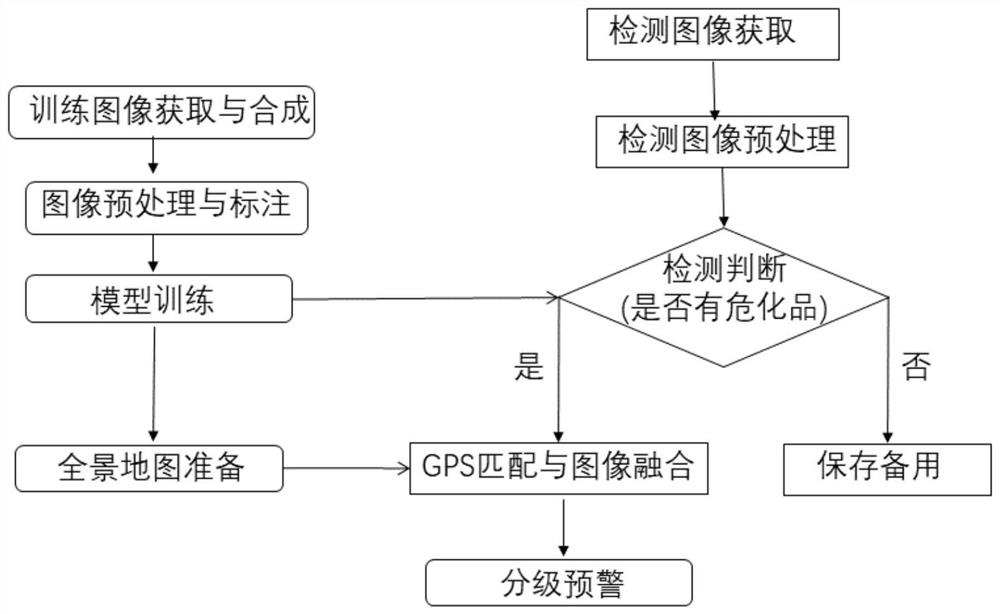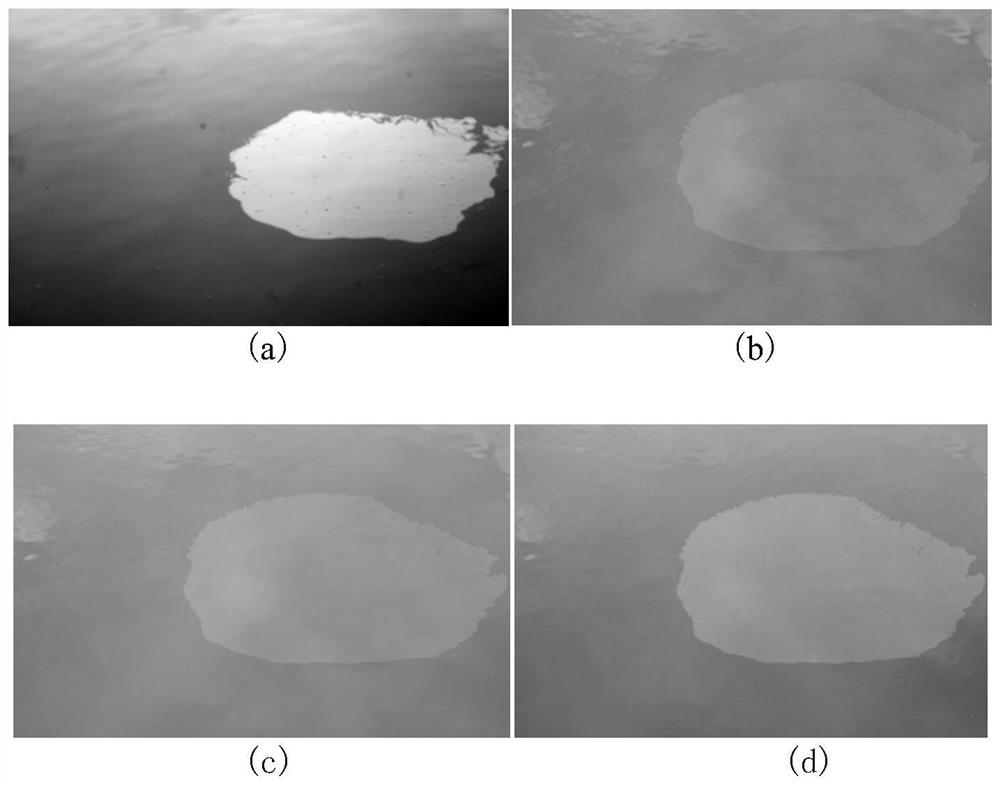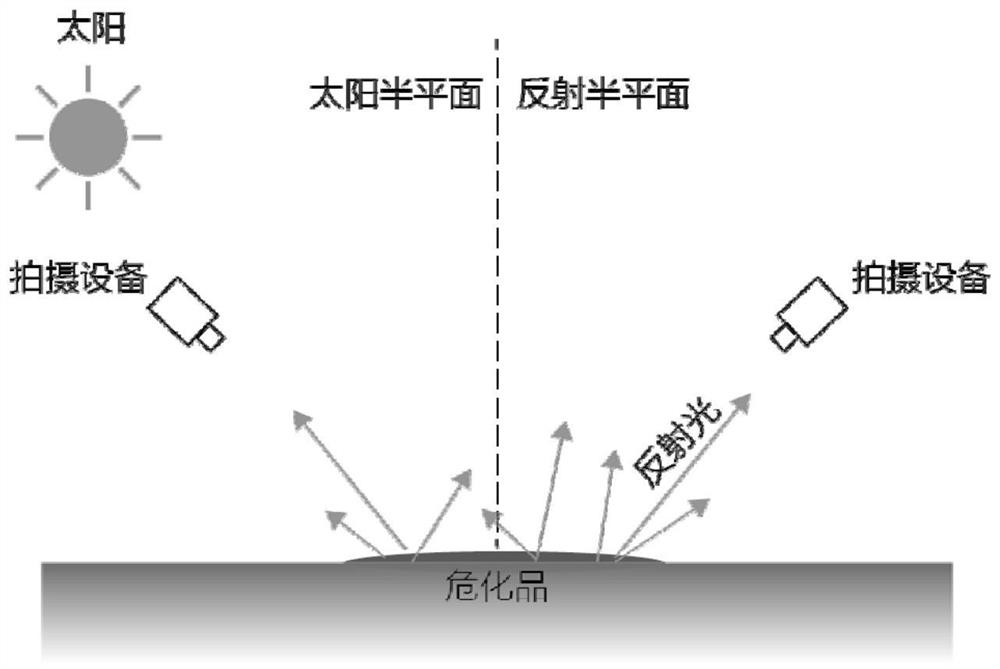A detection and early warning method for floating hazardous chemicals in coastal waters based on near-ultraviolet image processing
A near-shore sea area, image processing technology, applied in image data processing, image detector methods, image signal processing, image enhancement and other directions, can solve problems such as lack of emergency technology, meet data requirements, reduce impact, improve reliability awesome effect
- Summary
- Abstract
- Description
- Claims
- Application Information
AI Technical Summary
Problems solved by technology
Method used
Image
Examples
Embodiment Construction
[0042]The present invention will be described in further detail below in conjunction with the accompanying drawings and specific embodiments.
[0043] Taking the common colorless hazardous chemicals (xylene, etc.) of water transport as an example to detect the hazardous chemicals as an example, the implementation process of the method of the present invention will be described in detail (see figure 1 ): Through literature research and experimental verification, common floating hazardous chemicals have a more obvious reflectance difference than water when they are close to the ultraviolet band. This conclusion can be used for near-ultraviolet imaging detection of floating hazardous chemicals, such as figure 2 As shown, the 365nm near-ultraviolet images of common colorless hazardous chemicals such as xylene have better contrast than ordinary RGB images. Therefore, in this embodiment, the 365nm near-ultraviolet images of floating hazardous chemicals will be collected for detectio...
PUM
 Login to View More
Login to View More Abstract
Description
Claims
Application Information
 Login to View More
Login to View More - R&D
- Intellectual Property
- Life Sciences
- Materials
- Tech Scout
- Unparalleled Data Quality
- Higher Quality Content
- 60% Fewer Hallucinations
Browse by: Latest US Patents, China's latest patents, Technical Efficacy Thesaurus, Application Domain, Technology Topic, Popular Technical Reports.
© 2025 PatSnap. All rights reserved.Legal|Privacy policy|Modern Slavery Act Transparency Statement|Sitemap|About US| Contact US: help@patsnap.com



